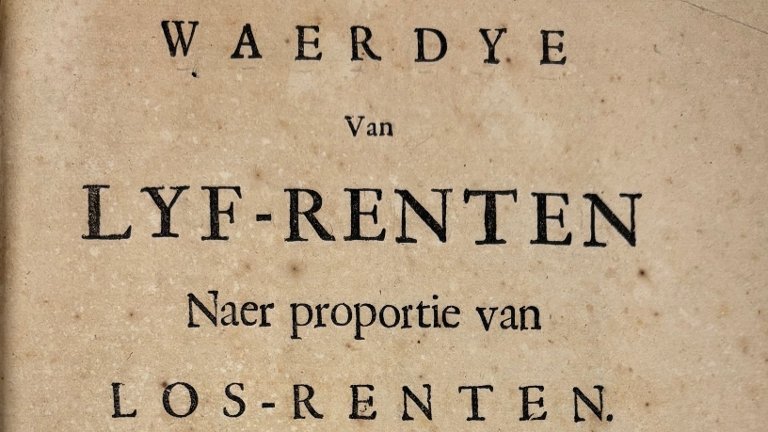Life annuities in the 17th century
In 1671, Johan de Witt, the Dutch Raadpensionaris (prime minister) wrote a book titled ‘Waerdye van lyfrenten naer proportie van losrenten’ (The Worth of Life Annuities Compared to Redemption Bonds). Printed in The Hague by Jacobus Scheltus, the ‘Waerdye’ is regarded as the first mathematical approach to chance and probability applied to finance. However, it took 100 years before mortality rates in general were more widely used for such business.
De Witt, known not only as a brilliant politician and scientist, collaborated with leading scientist Christiaan Huygens and Joannes Hudde—who was both a mathematician and the mayor of Amsterdam. Together, they developed a way to benefit from annuities associated with life expectancy. With a mortality table, life expectancy by age-class could be derived.
Johan de Witt is also remembered in Dutch history for his violent death in 1672. As prime minister of the Republic of the Seven United Provinces, he was a key figure in Dutch politics in the roaring mid-17th century. De Witt and his brother were lynched by an organised mob in The Hague.
The predecessor of NN Group, the Hollandsche Societeit van Levensverzekeringen, was the first to make use of actuarially calculated mortality rates and premiums.
NN’s historical collection contains a copy of the first edition of De Witt’s influential ‘Waerdye’—a rare treasure, as only three editions are known to exist.



